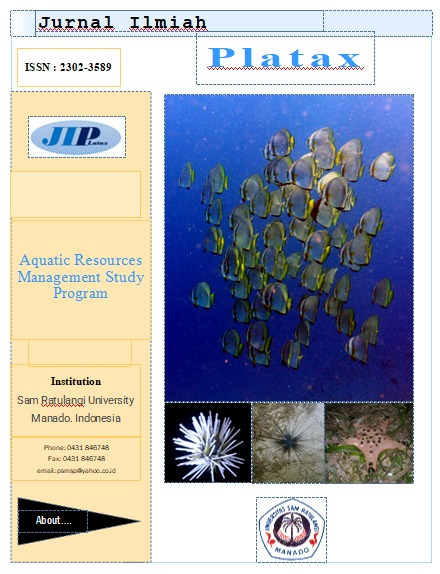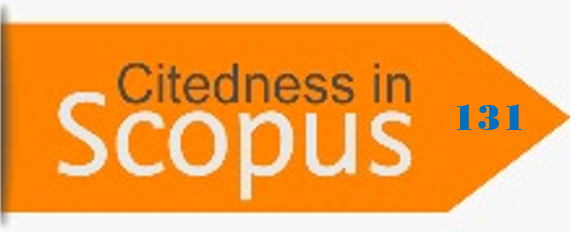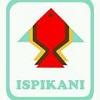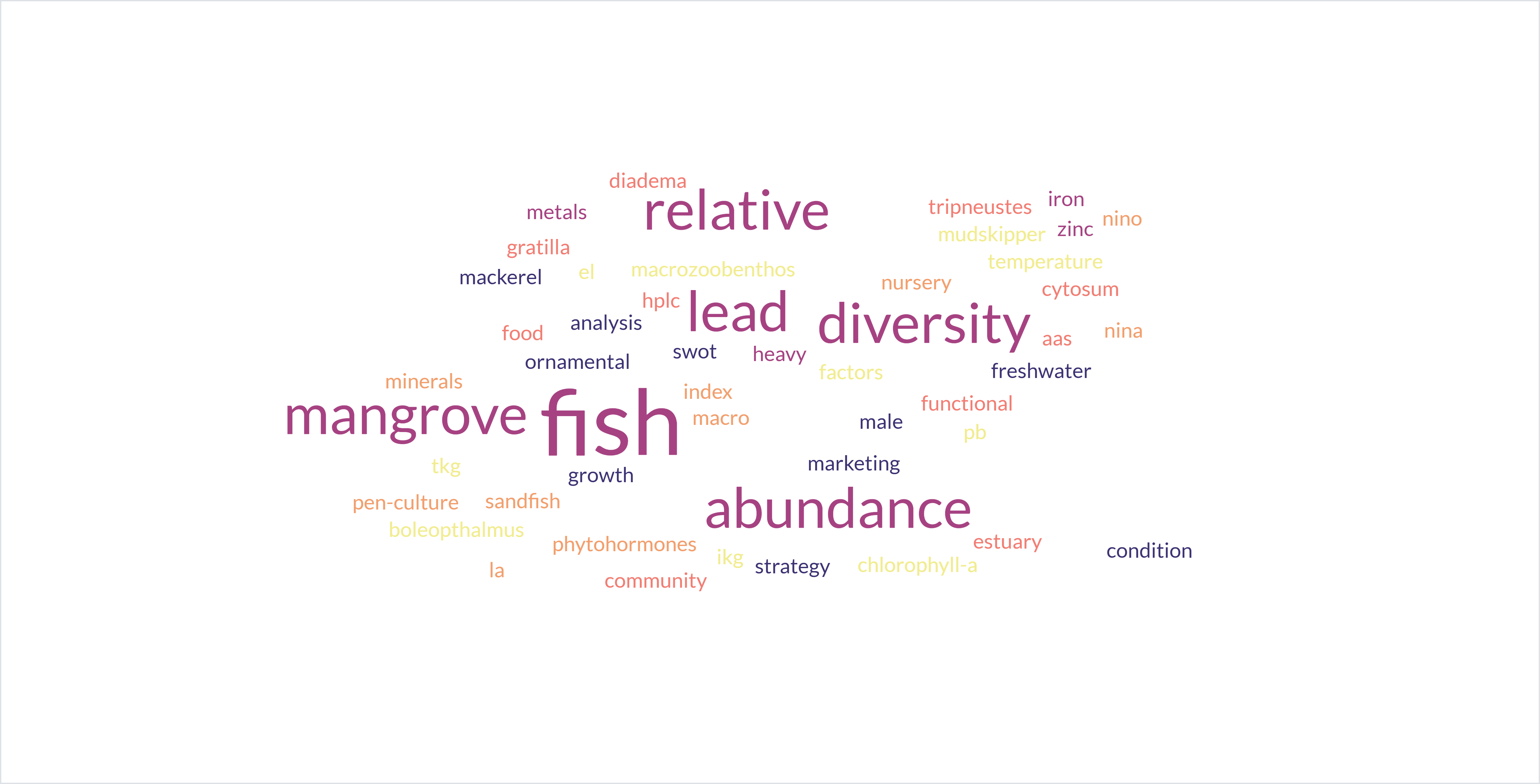Phytoplankton Community Structure in Seagrass Beds in Tiwoho Village, North Minahasa Regency
DOI:
https://doi.org/10.35800/jip.v11i1.45232Keywords:
Phytoplankton;, Biological Index;, Abundance;, Environmental parameters;Abstract
This research was carried out from May to July 2022. A sampling at the study site included seawater for the needs of plankton identification as well as the measurement of water nitrate & phosphate levels and measurement of physical and chemical parameters such as temperature, pH, salinity and dissolved oxygen which were carried out on an ongoing basis In situ (in the field). The technique for determining plankton sampling was carried out purposively, namely with certain considerations to obtain samples that represent the research location area. Plankton sampling was carried out horizontally using a plankton net. Sample bottles containing seawater were identified at the Marine Biology Laboratory, Faculty of Fisheries and Marine Sciences. The composition of the phytoplankton found in the Tiwoho seagrass bed ecosystem consists of three classes, namely the Bacillariophyceae, Dynophyceae, and Cyanophyceae classes, with 28 genera. The results of chopped phytoplankton are expressed in Cells/l. The qualitative determination of plankton is made up to the genus level. The composition of the phytoplankton found in the Tiwoho seagrass bed ecosystem consists of three classes, namely the Bacillariophyceae, Dynophyceae, and Cyanophyceae classes, with 28 genera. The results of calculating the abundance of phytoplankton in the Tiwoho seagrass ecosystem are in the range of 29 - 66 cells/l. The highest abundance was found at station two, namely 66 cells/l with 21 genera, then station three (65 cells/l) with 24 genera, and station one (29 cells/l) with a total of 23 genera. The diversity index of seagrass beds in Tiwoho waters is in the range of 1.9330 - 2.4083, which means that community stability is categorized as moderate. The uniformity index is in the range of 0.4614 - 0.7154, this means that the uniformity between species is relatively the same, or the difference is not striking. While the domination index is in the range of 0.1494 - 0.2404, it means that the condition of the community structure is stable, and there is no ecological pressure (stress) on biota.
Keywords: Phytoplankton, Biological Index, Abundance, Environmental parameters
Abstrak
Penelitian ini dilaksanakan pada bulan Mei sampai bulan Juli 2022. Pengambilan sampel di lokasi penelitian meliputi air laut untuk kebutuhan identifikasi fitoplankton dan pengukuran kadar nitrat, fosfat perairan serta pengukuran parameter fisika kimia seperti suhu, pH, salinitas dan oksigen terlarut yang dilakukan secara In situ (di lapangan). Teknik penentuan pengambilan sampel plankton dilakukan secara purposif yaitu dengan pertimbangan tertentu untuk mendapatkan sampel yang mewakili area lokasi penelitian. Pengambilan sampel plankton dilakukan secara horisontal dengan menggunakan plankton net. Sampel plankton diberi pengawet formalin 4% dan diidentifikasi di laboratorium Biologi Kelautan Fakultas Perikanan dan Ilmu Kelautan. Komposisi fitoplankton yang dijumpai di ekosistem padang lamun Perairan Tiwoho terdiri dari tiga kelas yaitu kelas Bacillariophyceae, Dynophyceae, dan Cyanophyceae, dengan 28 genera. Hasil perhitungan kelimpahan fitoplankton di ekosistem padang lamun Perairan Tiwoho berada di kisaran 29 - 66 sel/l. Kelimpahan tertinggi ditemukan di stasiun dua (depan kampung) yaitu 66 sel/l dengan 21 genera, kemudian stasiun tiga (depan dermaga) yaitu 65 sel/l dengan 24 genera, dan stasiun satu (ujung kampung) sebanyak 29 sel/l dengan jumlah 23 genera. Indeks keanekaragaman ekosistem padang lamun Perairan Tiwoho berada pada kisaran 1,9330 - 2,4083, yang berarti stabilitas komunitas dikategorikan sedang. Indeks keseragaman yaitu pada kisaran 0,4614 - 0,7154, ini berarti keseragaman antar spesies relatif sama, atau perbedaannya tidak menyolok. Sedangkan indeks dominasi yaitu pada kisaran 0,1494 - 0,2404, berarti kondisi struktur komunitas dalam keadaan stabil, dan tidak terjadi tekanan ekologi (stress) terhadap biota.
Kata kunci: Fitoplankton, Indeks Biologi, Kelimpahan, Parameter lingkungan
References
APHA. 1992. Standar Methods for The Examination of Water and Wastewater.America Publich Health Asosiation. New York.
Apridayanti, E. 2008. Evaluasi Pengelolaan Lingkungan Perairan Waduk Lahor Kabupaten Malang Jawa Timur. Tesis Ilmu Lingkungan Universitas Diponegoro. Semarang.
Arinardi, O. H., A. B. Sutomo, S.A. Yusuf, E.A. Trimaningsih dan S.H. Riyono. 1997. Kisaran kelimpahan dan komposisi plankton predominan di Perairan Kawasan Timur Indonesia. P3O-LIPI. Jakarta. 140 hal.
Bold, H.C. and Wynne, M.J. 1985. Introduction to the algae (second edition), Prentice-Hall, Inc., New Jersey. 720 p.
Hamuna, B., Tanjung, R. H. dan Maury, H. 2018. Kajian kualitas air laut dan indeks pencemaran berdasarkan parameter fisika-kimia di perairan Distrik Depapre, Jayapura. 35-43.
Hutomo, M., & Azkab,M, H. 1987. Peranan Lamun Di Lingkungan Laut SA Dangkal, XII(1), 13–23.
Kadir, M. A., Damar, A., dan Krisanti, M. 2015. Dinamika Spasial dan Temporal Struktur Komunitas Zooplankton di Teluk Jakarta. Jurnal Ilmu Pertanian Indonesia, 20(3), 247-256.
Kementerian Lingkungan Hidup Republik Indonesia (KLH). 2004. Baku mutu air laut untuk biota laut. Keputusan Menteri Negara Lingkungan Hidup No.51 Tahun 2004 Tentang Baku Mutu Air Laut. KLH. Jakarta.
Koesoebiono. 1981. Plankton dan Produktivitas Bahari. Fakultas Perikanan Institut Pertanian Bogor, Bogor. 173 hal.
Likens, Gene E. (Ed), 2010. Plankton of Inland Waters: A Derivative of Encyclopedia of Inland Waters. Associated Press, Amsterdam. 398 p.
Lind, O.T., 1979. Handbook of common methods in limnology. The CV Mosley Company. 200 p.
McGaraghan, A. (2016). Phytoplankton Identification. Kudela Lab Biological Oceanography. 91 p.
Melati, Herman dan Listari. 2005. Komunitas Fitoplankton Sebagai Bio-Indikator Perairan Teluk Jakarta. Seminar Nasional MIPA 2005. Depok.
Muchtar, M., Simanjuntak. 2008, Karakteristik dan Fluktuasi Zat Hara Fosfat, Nitrat dan Derajat Keasaman (pH) di estuary Cisadane pada Musim yang Berbeda. Ekosistem Estuari Cisadane: LIPI: 139-148.
Newell, G.E., R.C. Newell. 1963. Marine plankton a practical guide. Hutchinson Educational LTD, London. 206p.
Nontji, A. 1993. Laut Nusantara. Djambatan. Jakarta. 368 hal.
Nontji, A., 2007. Laut Nusantara. Edisi Revisi, Cetakan ke-5. Djambatan. Jakarta, 300 hal.
Nybakken, J. W. 1992. Biologi laut. Suatu Pendekatan Ekologis. PT Gramedia. Jakarta. 480 hal.
Rumengan, I., J. Rimper. 2016. Planktonologi. Patra Media Grafindo. Bandung. 124 hal.
Sari, R. M., Sri Ngabekti, and F. Putut Martin HB. "Keanekaragaman Fitoplankton di Aliran Sumber Air P Condrodimuko Gendongsongo Kabupaten Semarang." Jurnal: Unnes Journal of Life Science. Universitas Negeri Semarang 1.2 (2013): 2252-6277.
Schaduw, J.N.W., 2018. Distribusi dan karakteristik kualitas perairan ekosistem mangrove pulau kecil Taman Nasional Bunaken. Majalah Geografi Indonesia, 32(1), 40-49.
Simanjuntak, M. 2007. Oksigen Terlarut dan Apparent oxygen Utilization di Perairan Teluk Klabat, Pulau Bangka. Dalam : Ilmu Kelautan UNDIP. Vol 12 (2) : 59-66.
Stirn, J., 1981. Manual of methods in aquatic environment research. Pt. 8-Ecological assessment of pollution effects. FAO Fisheries Technical Papers (FAO). 80 p.
Sutamihardja, R. T. M. 1978. Kualitas dan Pencemaran Lingkungan. Fakultas Pascasarjana Institut Pertanian Bogor. 92 hal.
Tarigan, M.S. “Edward”. 2003. Pengaruh Musim Terhadap Fluktuasi Kandungan Fosfat dan Nitrat di Laut Banda. Makara Sains, 7(2): 82-89.
Tomas, C. R. 1997. Identifying Marine Phytoplankton. Academic Press. 858 p.
Wagey, B. T. 2013. Hilamun (Seagrass). UNSRAT PRESS. Manado. 129 hal.
Wardhana, W.A. 2001. Dampak Pencemaran Lingkungan (Edisi revisi). Penerbit Andi. Yogyakarta.
Wardoyo, S.T.H. 1982. Water Analysis Manual Tropical Aquatic Biology Program. Biotrop, SEAMEO. Bogor. 81 hal.
WoRMS (World Registes of Marine Species). 2022. Marine Species. http://www.marinespecies.org/.
Yamaji, I. 1982. Ilustrations of the marine plankton of Japan. Hoikusha publishing Co., Ltd., Osaka. 537 p.
Downloads
Published
How to Cite
Issue
Section
License
Copyright (c) 2023 Abraham M. Rimper, Veibe Warouw, Joice R.T.S.L Rimper, Rosita A.J. Lintang, Medy Ompi, Henneke D. Pangkey

This work is licensed under a Creative Commons Attribution-NonCommercial 4.0 International License.
COPYRIGHT
Authors who publish with this journal agree to the following terms:
Authors hold their copyright and grant this journal the privilege of first publication, with the work simultaneously licensed under a Creative Commons Attribution License that permits others to impart the work with an acknowledgment of the work's origin and initial publication by this journal.
Authors can enter into separate or additional contractual arrangements for the non-exclusive distribution of the journal's published version of the work (for example, post it to an institutional repository or publish it in a book), with an acknowledgment of its underlying publication in this journal.
Authors are permitted and encouraged to post their work online (for example, in institutional repositories or on their website) as it can lead to productive exchanges, as well as earlier and greater citation of the published work (See The Effect of Open Access).




















